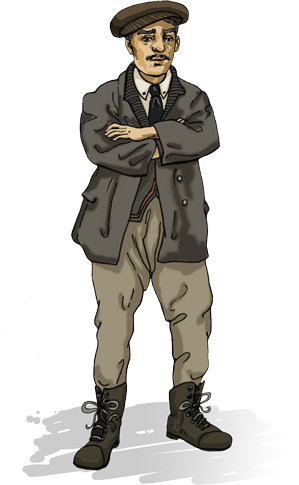-
Vinduw route
-
Boek uw verblijf
-
Koop jeski- en wandelpas

Boek uw verblijf



maandag 23 december Bijgewerkt op 12-23-2024 om 8:06
maandag 23 december Bijgewerkt op 12-23-2024 om 8:06
Schrijf je in voor onze nieuwsbrief om niets te missen van les Arcs!
![[Translate to English:] [Translate to English:]](/fileadmin/user_upload/headerete2024.jpg)
The prices and visiting days are available on My week at Les Arcs or at the Tourist Offices.
The Quartier des Alpins in Bourg-Saint-Maurice hosted the Diables Bleus of the 7th Battalion of Alpine Hunters (BCA) until 2012. This memorial site offers an opportunity to discover the Haute Tarentaise valley and the defensive structures built to protect and control communication routes to Italy. It provides a chance to explore the local military history, including its organization, the construction of fortifications, the battles, and the men who gave their lives for our freedom and peace.

«My name is Francesco Séconi. I was born in Vicenza, and crossed the Alps in 1889 to find work in France. Near Bourg Saint Maurice the forts were under construction and I was quickly hired. As I took up my job I was delighted to meet many of my compatriots from different regions of Italy. The work was tiring, endless days in all weathers, and thousands of tons of metal and concrete were used. When the work was finished I stayed in France, settled here and started a family.»
De bouw en architectuur van forten pasten zich aan aan de constante evolutie van de artillerie.
Belangrijke data van deze technologische doorbraken:
1858: De uitvinding van het getrokken kanon verhoogde de kracht, precisie en verdubbelde het gewicht van de projectielen.
1873: De invoering van achterlaadkanonnen maakte de modernisering van oude bronzen kanonnen mogelijk, zoals de 138 Reffye, die aanwezig was in de meeste forten.
1877: Invoering van het nieuwe stalen kanon, de 155 de Bange, met een bereik van 9 km.
1878: Invoering van het nieuwe stalen kanon, de 120 de Bange, met een bereik van 8 km.
1885: Invoering van een nieuwe explosieve stof, "meliniet," gebruikt in torpedogranaten. Tien keer krachtiger dan buskruit, het vereiste de versterking van sommige forten met speciaal beton.
1897: Invoering van het snelvuurkanon van 75 mm. Het revolutionaire hydro-pneumatische terugslagsysteem absorbeerde de terugslag van het stuk volledig.
In 1913 werden de batterijen van Courbaton en des Têtes gebouwd.
In 1937, als reactie op de opkomst van fascisme en nazisme, werden twee strategische wegen aangelegd voor de bevoorrading van manschappen, voedsel en munitie: één vanuit Peisey-Nancroix en de andere vanuit Hauteville-Gondon. Ze werden gebouwd door oud-strijders van de Spaanse Burgeroorlog. De naam "Route des Espagnols" bestaat vandaag de dag nog steeds voor de weg in Peisey-Nancroix.

It was the main means of communication from 1874 to 1914 and was still being used after the arrival of the telephone during the Second World War. Messages were transmitted using Morse code (invented in 1832). Light pulses were produced using a lamp with a shutter. A telescope was used at the receiving end.